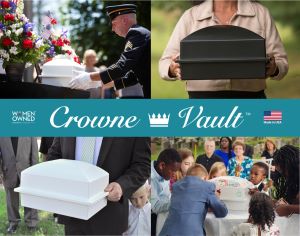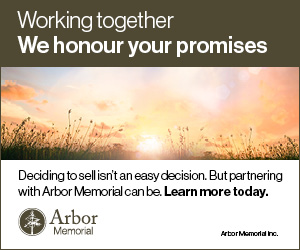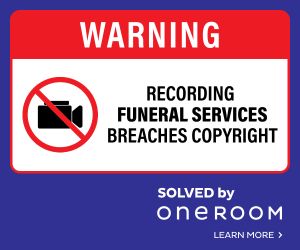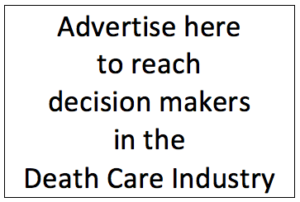2024 Death Care “Trend of the Year”: The continuing growth of human disposition options

It hit me the other day while I was in the process of reading a new book, “Meeting the Moment”. It’s a story of how six United States Presidents “met the moment” and “Inspired Presidential Leadership that transformed America”.
It’s also probably an odd place to get insight and inspiration for putting down a continuing change in American death care choices. However, when I read of the scene that President Abraham Lincoln viewed as he arrived in Gettysburg for the famous Gettysburg Address on November 18, 1863, (the address, to dedicate the cemetery at Gettysburg, was presented on November 19) it struck me how trends slowly move forward and many times become societal mores over time.
According to the book, here’s what President Lincoln saw when his train pulled into Gettysburg, “. . .he couldn’t escape the solemness of the occasion, as spread out across the train platform were hundreds of coffins set for reburial, a reminder of the great human cost and sacrifice exhibited in this small community only months earlier.”
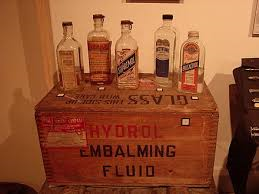 You see, embalming was something pretty new in 1863. Up until that time it was mainly done in the United States for anatomical and medical study. However, some say that under President Lincoln’s direction, embalmers were sent into the field to preserve deceased Union soldiers so they could be brought back to their home areas for burial.
You see, embalming was something pretty new in 1863. Up until that time it was mainly done in the United States for anatomical and medical study. However, some say that under President Lincoln’s direction, embalmers were sent into the field to preserve deceased Union soldiers so they could be brought back to their home areas for burial.
Those coffins on the Gettysburg railroad platform were most likely intended for the eventual transport of Union soldiers back to their home community. They were more than likely to be used for Union soldiers who lost their lives at Gettysburg and had been identified, embalmed, and eventually would be casketed (or put in coffins) for their trip home.
Up until that time in America, deceased citizens were hastily buried with no preservation. . . a preservation that eventually allowed for family visitations.
That change, to embalming for preservation, that is evident at Gettysburg is what probably started the movement that grew into the business of the modern American funeral home.
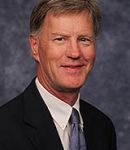
Tom Anderson
Funeral Director Daily
It wasn’t long after that that the care of death in America became a profession and industry. . . and, it can probably all be traced back to the embalming of the body for preservation. It sprouted embalming classes (my grandfather attended one in 1905), it sprouted the business of wholesale caskets (Batesville Casket was launched in 1884), and it was also in that time period that businesses dedicated to the soul purpose of taking care of the deceased were launched. . . . . many funeral firms that date back farther than that date in the U.S. can trace their history to cabinet of furniture making and later morphing into the funeral business.
There is no doubt that the embalming for the preservation of the deceased lead to the building of “funeral homes” and businesses all across America. And, for over 150 years, even with the advent of cremation as an alternative human disposition option, funeral homes have thrived.
However, things do change over time. . . .and America now is a nation in which only about 35-50% of all deceased are embalmed. Direct cremation with no viewing prior to the cremation has led to that change. . . . .
And I think what we are now seeing in the small growth of other forms of human disposition will over time continue that movement. There is no doubt that the American public has a desire for other options at this time and, in my book, that is or will become, the biggest driver of how American death care vendors will operate their businesses in the next 50 to 75 years.
According to this article, alkaline hydrolysis, or water cremation as it is termed, is legal in 28 states and, according to this article, natural organic reduction, or human composting as it is termed, is legal in 11 states. And, both options are expected to grow legally as state legislatures convene in 2025.
Movements like this happen slowly, but once they pick up steam they are hard to stop. I think that is the case with the growing human disposition options in America. You know that they are somewhat reaching a mainstream of thought when America’s largest death care purveyor begins offering the options. . . . . This press release (which is already a year and a half old) from Service Corporation International tells of them doing just that.
Here’s what SCI Seattle Market Director at the time Keith Baumgardner said, “Our client families have been asking for different options to inter their loved one. Human composting is a new way of returning our bodies to the earth.”
There are a lot of other issues happening in the greater death care world, but if I had to pick one issue or trend that I see materializing and affecting the way death care providers serve their clientele in the next 50 years it will be the continued legality and interest in these newer methods of human disposition.
Who knows when fully implemented and legal in the United States what percentage of deaths will use these methods. . . . I don’t think, at least for the foreseeable future, either of them will top cremation as the disposition of choice. However, I’m pretty certain that both alkaline hydrolysis and natural organic reduction will continue to have some upward movement in the numbers and percentage of people who choose those methods. . . . and as they gain popularity funeral homes will have to find a way to put them into their menu of service options.
Related—“A Sacred Event: Why interest is growing in natural burials.” San Antonio Express-News (TX)
More news from the world of Death Care:
- Worker of the Week directs Berry-Bell and Hall. Village News (CA)
- Funeral honors program serves America with timeless tradition. U.S. Army
- Preferred Cremation’s 5th Annual Jazz Concert. The San Diego Voice & Viewpoint (CA)
- 60 years in the funeral business: Remembering Elery Lewis. Video news story and print article. KELO – Sioux Falls (SD)
Enter your e-mail below to join the 3,111 others who receive Funeral Director Daily articles daily:
“A servant’s attitude guided by Christ leads to a significant life”









